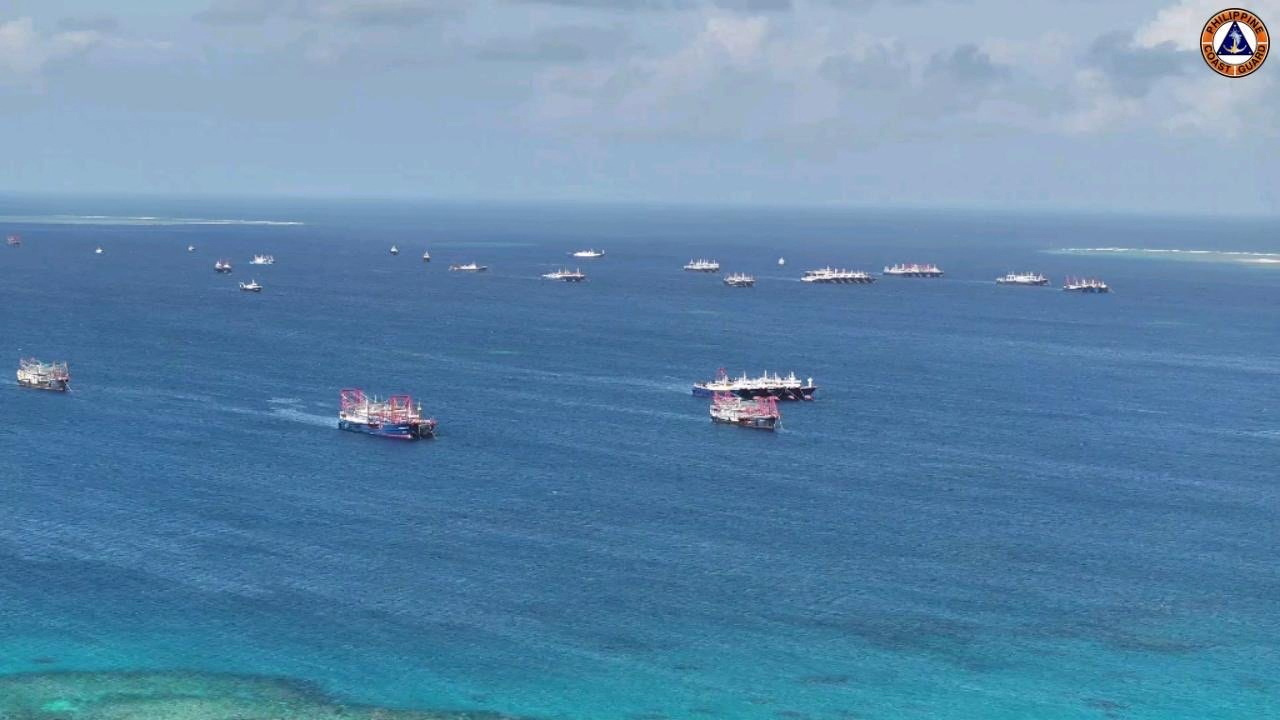Tensions over disputed waters between China and the Philippines have escalated during 2023, as Vietnam tries to keep its balance while deepening relations with the United States. Beijing moves on Cambodia and Thailand, both of which have a new premier
By Sabrina Moles
"A maritime community of shared destiny." And here the Xi Jinping-era motto about "a community of shared destiny" becomes a message thrown toward its "sea" neighborhood. A neighborhood that is certainly not stable, and now more than ever an object of attention for all those economic, political and social realities that overlook a 3.6 million square kilometer body of water that affects 60 percent of global maritime trade. According to 2017 data from the Center for Strategic and International Studies (Csis), more than $3.37 trillion worth of goods transit these waters, and just as many opportunities still lurk in the depths: metals, oil, gas.
If the Pacific in general is now one of the hottest spots in international dynamics the South China Sea sits there like an active volcano that could erupt at any moment. With the end of the pandemic, the monitoring and patrolling of the area that each government carries out to protect its sovereignty over part of these waters has also resumed, and any confrontation-particularly with Chinese vessels-could light the fuse. Diplomacy has taken few steps to protect freedom of navigation, and future years will decide the fate of these claims.
In 2016, the Permanent Court of Arbitration in The Hague rejected China's claims, following a complaint by the Philippine government in 2013. Since then, the process of redefining rights of passage and exploitation of natural deposits has also suffered continuous interruptions. Nations in the area have long demanded respect for the rules covered by the United Nations Convention on the Law of the Sea (UNCLOS), which does not cover the kind of "historic" sovereignty Beijing claims to have over the South China Sea. An area circumscribed by the so-called "nine-dash line" on its maps that encloses what the People's Republic considers to be its waters.
Since the 1990s, countries in the region have been trying to build a dialogue that could lead to the establishment of shared rules. The most significant progress came in 2002 with the ratification of a non-binding Declaration on the Conduct of Parties (Doc), but since then the idea of a binding Code of Conduct (Coc) has never really taken off. On the sidelines of the July 2023 ministerial, China and the countries of the Association of Southeast Asian Nations (Asean) established "common guidelines" to speed up negotiations, an action that reflects an attempt to revive the initiative but still sees the group's countries divided.
Indonesia, as chair for 2023, hosted the Association's first joint maritime exercises near the nine-stretch line. Signs that put China on edge, but not too much. In Asean, outside the Philippines, Vietnam, Indonesia, and Malaysia, the issue is less of a priority and may return to the margins in view of the rotating presidency of Laos, a country very close to Beijing. Indeed, the principle of consensus understood as unanimous agreement among the parties does not allow for the landing of a more determined strategy toward China.
Chinese companies and armed forces, meanwhile, continue to build. China has already placed military bases in the Spratlys, to the point that-according to U.S. Navy reports-three of these islets can be described as fully militarized due to the presence of anti-ship and anti-aircraft missile systems.
The presence of Chinese ships remains constant and "alarming," Manila said of the record 153 Chinese-flagged vessels located near its exclusive economic zone. Confrontations with Chinese vessels going as far as 800,000 nautical miles beyond its zone of jurisdiction are not uncommon, according to Coast Guard reports from countries in the area. The list includes the less than ten-meter ship approach between a Vietnamese fishing vessel fishing and the Chinese navy in March 2023, the two collisions between Chinese vessels and Philippine ships in October 2023, and the confrontation between Chinese ships and the Philippine Coast Guard with the opening of water cannons. Philippine President Ferdinand Marcos has adopted a more aggressive policy on maritime security, returning to strengthening military cooperation with the United States.
Negotiations for an agreement with Hanoi are also underway. It is precisely Vietnam's position that is most under attention. Last September Joe Biden was in Hanoi for a visit described as "historic" and which led to his being received at the Vietnamese Communist Party headquarters. Bilateral relations have been high and contacts on military supplies have deepened, with Vietnam fearing a growing alignment between China and Russia after the war in Ukraine, with the latter struggling to maintain its position as a defense supplier. But beware of thinking that Hanoi is ready to be enlisted by anyone. Compared to the more assertive Philippines, Vietnam continues to want to balance its position, as evidenced by Xi Jinping's December visit. An important signal of assurance for Beijing.
On the Thailand and Cambodia side, however, the approach to maritime security appears softer toward the Chinese giant. Having validated the rise of Hun Manet, son of former Prime Minister Hun Sen who officially became his heir after the July elections, a prospect of continued good neighborly relations is now before observers' eyes. The first signs came with the ban on U.S. officials' access to the Ream naval base in 2021, while the news of the first docking of Chinese ships at one of the key military facilities in the region is from December 2023.
Militarily, China has also been catching up with Thailand, with which it has long held joint exercises. While in 2017 the agreements called for one naval exercise, in 2023 the frequency of meetings increased to three, including air and ground operations. Washington has reduced the scope of military cooperation since the 2014 coup, creating a vacuum that China soon sought to fill.






